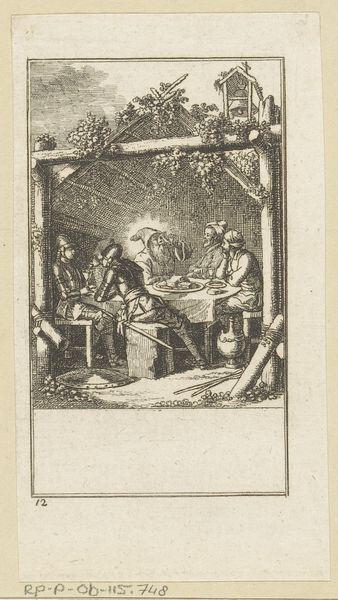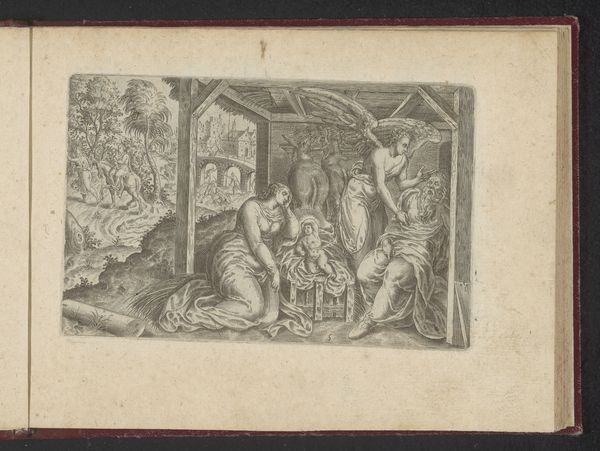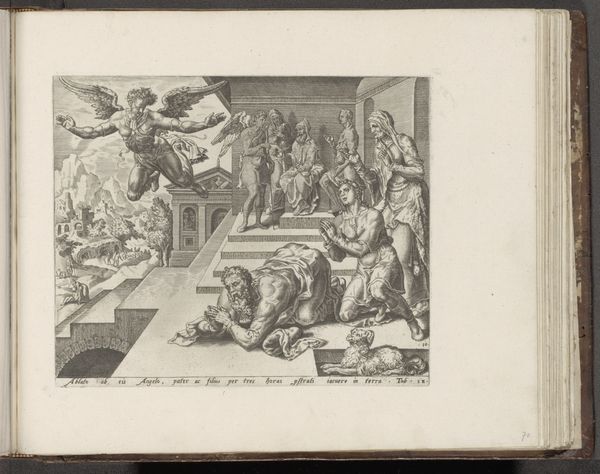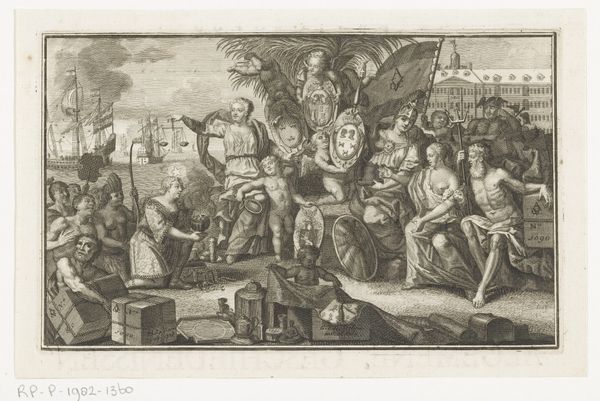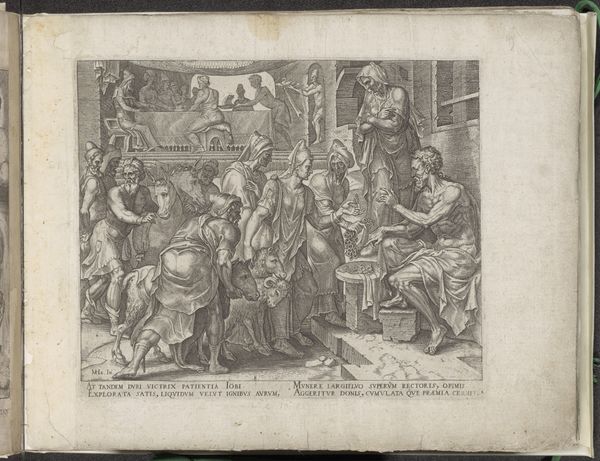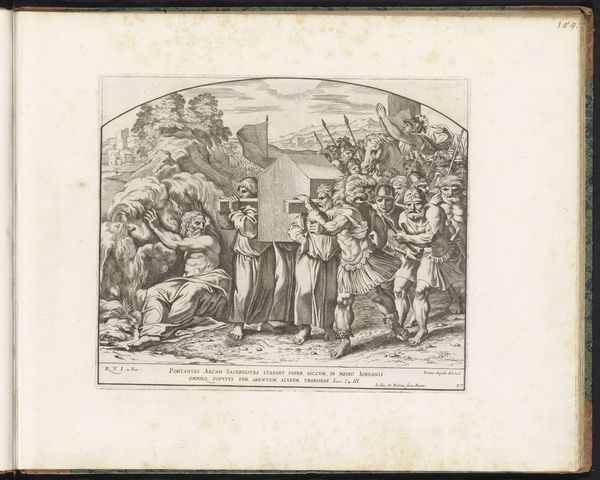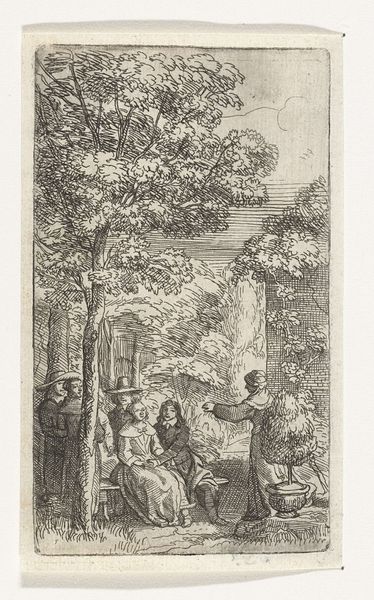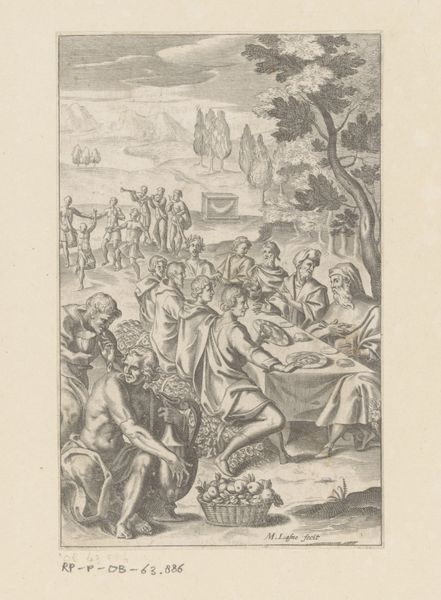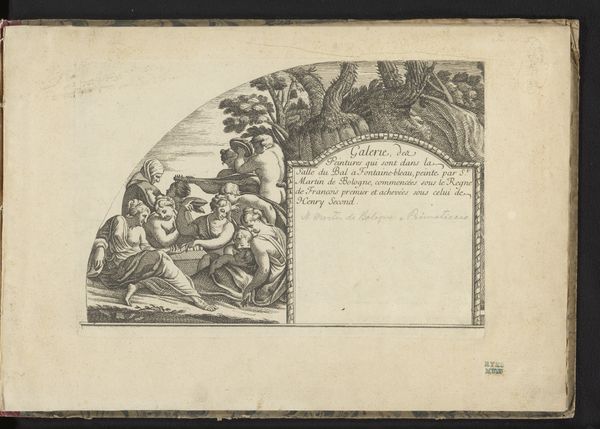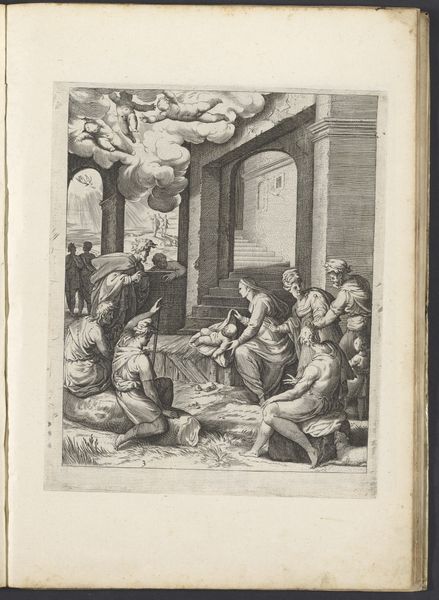
#
comic strip sketch
#
aged paper
#
light pencil work
#
old engraving style
#
sketch book
#
personal sketchbook
#
sketchwork
#
sketchbook drawing
#
storyboard and sketchbook work
#
sketchbook art
Dimensions: height 145 mm, width 95 mm
Copyright: Rijks Museum: Open Domain
Editor: This is "Elegant gezelschap aan tafel in openlucht," created sometime between 1588 and 1637 by Daniel Rabel. It looks like an engraving or etching. I am really drawn to the level of detail in the figures and the landscape in the background, like it is documenting the life and pleasures of aristocracy. How would you interpret this work? Curator: Looking at this engraving, I'm immediately interested in its materiality. The use of line, the deliberate construction of perspective - these all point to specific production processes. What kind of labor went into creating this image? Editor: So you're thinking about the physical act of creating the print itself? Curator: Precisely. How was the copper plate made? How many impressions could Rabel have pulled from a single plate before it degraded? The distribution and consumption of this kind of imagery, which also informs who has access and how those demographics impacted art during that time period is all tied to these material conditions. Editor: That makes me think about the setting too, then. What kind of message is Rabel trying to make showing such privileged displays of leisure and what does it say about the consumption habits of those who likely could afford artwork like this during this era? Curator: Excellent point! Consider the "openlucht," the open air – is this a commentary on man's relationship with nature or something else entirely? Also, note the various objects: the clothing, the vases, the food displayed. How do those details of what appear as "luxuries" shape and solidify social positions and values? Editor: Now I’m also considering where Rabel himself was situated in the context. I suppose it makes sense, knowing all this, to see beyond just a "snapshot" of high-society. It's actually deeply connected to its material production and social consumption, making it pretty multifaceted. Curator: Absolutely. This piece reminds us that art doesn’t exist in a vacuum. It's intrinsically linked to the systems of production, labor, and consumption of the past and still today.
Comments
No comments
Be the first to comment and join the conversation on the ultimate creative platform.
